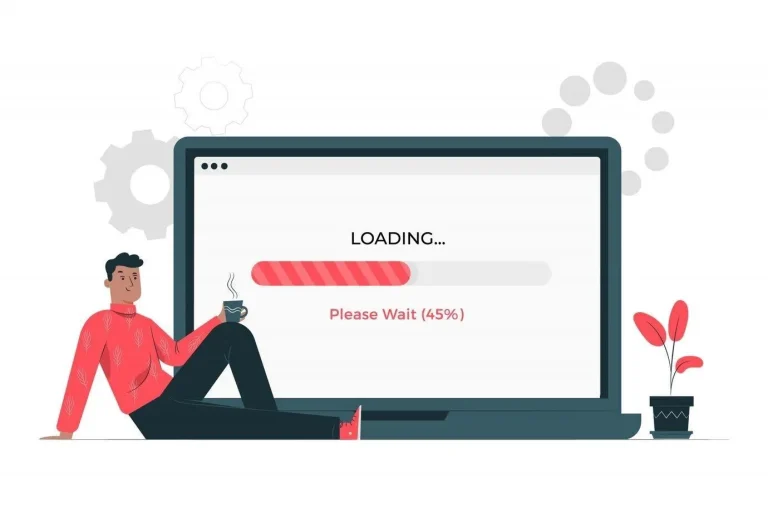Struggling with content engagement despite pouring your heart and soul into your work? This scenario is all too common. As a publisher, you’ve dedicated countless hours, sacrificed leisure time, and immersed yourself completely in your content creation endeavors. You’ve followed all the best practices, yet, when you hit publish, the response is… underwhelming. The engagement you expected isn’t there.
Sounds familiar? You’re not alone. This is a common challenge for every publisher. But don’t worry; it’s a challenge that can be overcome. The key lies in understanding what user engagement truly means, why it’s vital, and how it directly impacts your revenue.
So, let’s put the pedal to the metal and delve deeper into this crucial aspect of online publishing, shall we?
Table of Contents
The Art of User Engagement
User engagement is a multifaceted concept. It’s not just about the number of clicks or views a piece of content gets. It’s about how your user interacts with your content and the value they derive from it. An engaged user is more likely to trust your brand, subscribe to your services, and ultimately contribute to your revenue.
So, what does an engaged user look like?
💡 Simply put, an engaged user creates valuable, meaningful interactions with your content, platform, or services. The depth of their interaction — from reading and sharing content to participating in discussions and more — indicates their engagement level.
Interesting, right? Now, let’s unpack this even further. Google and Yahoo have made some insightful studies on stages of user engagement –

Armed with insights into the stages of user engagement, we’re all set to tackle the elephant in the room. Let’s deep dive into tried-and-tested strategies guaranteed to amplify your user engagement!
4 Strategies to Boost User Engagement
Understanding and measuring audience engagement is only half the battle. The next step is to use this understanding to boost engagement levels. Here are some proven strategies that can help:
1. Personalizing Content for the Audience
Creating a tailor-made user experience is the essence of content personalization. Below are some effective personalization strategies:
Trends and Open-Source Data: The first step is identifying what’s popular in your niche. Utilize tools like Google Trends, industry reports, and open-source data to identify what your potential audience is interested in.
Search and Demand: Next, use keyword research tools like Google Keyword Planner to understand the specific topics your potential audience is searching for. This will help you create content that meets their demands and captures their interest.
Content Personalization: Finally, use the insights gathered to create content that resonates with your audience. Personalization is about making your audience feel seen and understood, as if every piece of content was specifically created with them in mind.
If you want to learn more about content personalization, you can dive deeper into our guide Content Personalization for Publishers.”
Remember, personalization is about creating a connection. But the engagement doesn’t stop here; let’s move on to the next strategy: interactive elements.
2. Elevating Engagement with Interactive and Media Elements
Crafting an exceptional user experience involves a delicate symphony of content personalization, interactivity, and media integration. Here’s the melody to follow:
Live Videos and Visual Engagement: Kickstart the engagement process with visually appealing content. Consider introducing live videos to encourage real-time interaction. These could be Q&A sessions, behind-the-scenes peeks, or product demos.
Coupling this with strong visual elements in your content is crucial. After all, research indicates that users are nearly twice as likely to linger on the first screen when an article begins with an image.
Quizzes, Polls, and Value Addition: Increase user experience by integrating quizzes and polls into your content. These interactive elements not only make your content fun but also glean invaluable insights about your audience’s interests and opinions.
To further enrich this experience, complement these interactions with relevant media elements such as infographics or videos that add value and depth to the overall content.
Moderation is Key: Remember, the purpose of media elements is to enhance your content, not to overshadow it. Much like a symphony, each component plays a vital role, but harmony is only achieved when everything is balanced.
💡 Side note: While interactive and media elements can significantly enrich the user experience, they might also impact your page loading time. Therefore, optimizing these elements is essential to ensure a smooth user experience.
With these tactics in play, you’re creating an engaging and immersive content experience. But the performance doesn’t end here. Up next, we’ll explore how data can take user engagement to new heights.
3. Leveraging Data to Enhance User Engagement
To create an effective content strategy, we need to understand our audience’s preferences and behaviors. That’s where data comes into play. It acts as our compass, guiding us on what our audience wants and how we can deliver it.
Track User Behavior: Start by collecting user data. Use tools like Google Analytics to measure various engagement metrics, such as the duration of user visits, the pages they frequent, the links they click on, and more. This step helps you gather the raw data you need.
Identify Engagement Patterns: Once you have collected the data, analyze it. Look at specific metrics such as time spent on pages, click-through rates, social shares, and comments to identify patterns. The patterns you uncover will give you insight into which types of content or topics generate the most interest and which parts of your site are the most popular.
Using Data to Perfect Content: User data isn’t just numbers; it’s a powerful tool for crafting content and SEO strategies. Understanding your audience’s behavior helps tailor your content, aligning it more closely with their interests. This could mean focusing more on certain topics, adjusting your writing style, or even changing the content format. For instance, if your data shows users engage more with videos or infographics, it signals to produce more of such content. It’s all about ensuring your content aligns with your audience’s preferences.
To delve further into this topic, read our blog on how to use Data and Analytics to Improve Content and Monetization, where we delve deeper into data-driven content strategy.
Shifting gears, let’s delve into another pivotal aspect: balancing user experience with ad revenue.
4. Balancing User Experience & Your Monetization Strategies
For publishers who monetize their content through ads, finding the sweet spot between user experience and ad revenue is a strategic art. It’s crucial for maintaining audience interest while ensuring profitability. Here’s a step-by-step guide on how you can achieve this:
Prioritize User Experience: User experience is at the heart of your content strategy. Even though ads contribute to revenue, they shouldn’t disrupt the user’s journey on your site. Here’s how you can ensure a seamless user experience:
- Limit Ad Volume: Keep your site clean and uncluttered by limiting the number of ads. Excessive ads can slow page loading times and distract users from your content.
- Responsive Design: Implement a responsive design that makes your site easily navigable on various devices, ensuring a smooth and enjoyable user experience.
Curate Relevant Ads: Ads should add value to your user’s journey, not distract from it. Below are some tips.
- Contextual Advertising: Align your ads with your content. For instance, if your site is about fitness, gym equipment ads would be more relevant and engaging for your audience.
- Audience Interests: Use the user data collected (refer to ‘Leveraging Data to Enhance User Engagement’) to understand your audience’s interests, then curate ads that cater to these interests.
Experiment with Ad Formats: Different audience segments may engage differently with various ad formats. Here’s how you can optimize your ad formats:
- Try Various Formats: From banner ads to native ads, test different ad formats to see which one is most effective for your audience.
- Measure Performance: Use metrics such as click-through rates, impressions, and conversion rates to gauge the effectiveness of each ad format. Optimize based on what works best.
Balancing user experience and ad revenue doesn’t have to feel like a tightrope walk. With the right strategies and a user-centric approach, you can enhance your audience’s journey while also boosting your revenue.
To further explore this balancing act, consider reading our blog to find the right balance between ads and user experience. It provides insights into achieving the sweet spot between pleasing your audience and maintaining ad revenue.
Now that we have painted a vivid picture of various engagement-boosting strategies, let’s shift gears. Let’s learn how to measure the success of our strategies and refine them for even better outcomes.
Understanding and Measuring Key User Engagement Metrics
Creating a well-designed digital environment that captivates and retains the attention of your users requires a thorough understanding and careful monitoring of user behavior. User engagement metrics can provide crucial information to help you evaluate the effectiveness of your engagement strategies and make necessary adjustments.
Here are some basic metrics that provide an initial understanding of user engagement on your website. They’re a starting point to assess how your content is performing.
| Basic Metrics | Description | How to Measure |
|---|---|---|
| Dwell Time | This tells us how long a visitor stayed on your webpage, from the moment they landed to when they left.
It gives us an idea of how well your content attracts the visitor. |
Dwell Time can be found by looking at the time difference between the first and last page views of a specific visitor’s session.
Google Analytics is a handy tool that can help us do this. |
| Viewport Time | This is about how long a visitor interacts with a certain part of your webpage.
It helps identify which parts of your content attract the most attention. |
Tools like Hotjar can help us understand this better.
They use a heatmap visual to show us where visitors spend the most time on your page. |
To truly optimize user engagement, you’ll need to delve deeper and employ advanced metrics. Inspired by the work of Dmitry Lagun and Mounia Lalmas, here are some viewport data-based metrics:
Advanced metrics offer a more nuanced understanding of user behavior, providing deeper insights into how users are interacting with your content.
| Advanced Metrics | Description | How to Measure |
| Reading Time | The time users spend actually reading your content. | This is calculated by dividing the total number of words by the average reading speed. This information can be captured using various analytics tools that track user behavior, like the Page Analytics plugin. |
| Skimming Time | The time users spend quickly scrolling through your content without really interacting with it. | Monitor this through Scroll Depth plugins or similar tools that track scrolling behavior. |
| Idle Time | The periods when users aren’t doing anything on your webpage. This could suggest that they’re distracted or not interested. | You can monitor these periods of inactivity using JavaScript scripts like Idle.js. |
| Below-the-Fold Time | The time users spend interacting with the part of your webpage that they can’t see immediately when the page loads. | Measure this using scroll tracking tools like crazy egg, helping you understand if key information needs to be relocated for better visibility. |
Just a heads up! Extra plugins and scripts might slow down your page load speed. So, balance it out to keep things smooth.
Harnessing Engagement: The Key Takeaway
In conclusion, enhancing user engagement is not just a desirable outcome; it’s a necessity in today’s highly competitive digital space. By leveraging the strategies we’ve discussed, we can cultivate an engaging user environment.
Remember, user engagement is not a one-time endeavor. It’s a continuous process of understanding, improving, and evolving to meet your audience’s ever-changing needs and preferences.
FAQs
How Can We Measure User Engagement?
User engagement is measured using metrics like dwell time, viewport time, reading time, skimming time, idle time, and below-the-fold time.
What Boosts Website User Engagement?
User engagement is boosted by strategies such as personalized content, interactive and media elements, and data-driven optimization.
What Metrics Calculate User Engagement?
User engagement is calculated using basic metrics (dwell time, viewport time) and advanced metrics (reading time, skimming time, idle time, and below-the-fold time).























